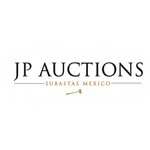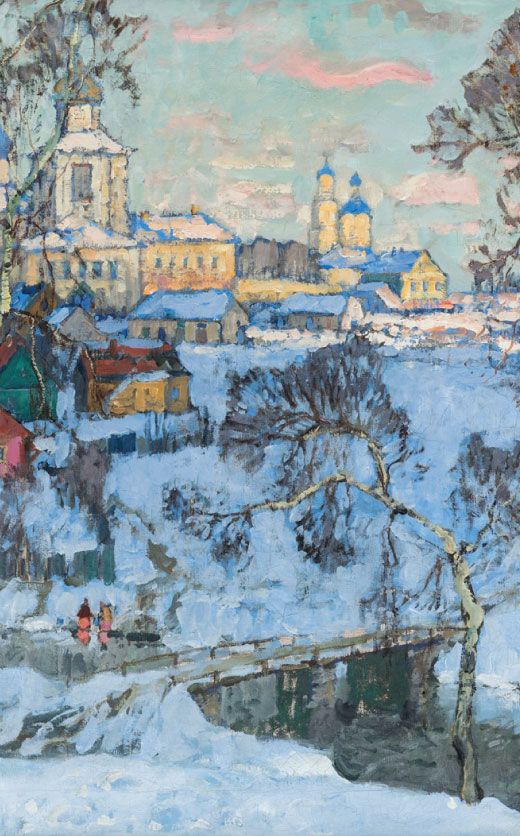RUPERTO ALVAREZ CARAVIA Riachuelo, Oleo/ tela.
About Auction
Feb 6, 2025 - Feb 15, 2025
JP Auctions Mexico heras@jpauctionsmexico.com
- Lot Description
RUPERTO ÁLVAREZ CARAVIA
Riachuelo
Óleo/ tela
33 x 48 cm.
RUPERTO ALVAREZ CARAVIA
Creek
Oil/fabric
33 x 48 cm.
Ruperto Álvarez Caravia
Pintor y consumado acuarelista nacido en Oviedo en 1919 y fallecido en esta misma ciudad el 4 de agosto de 1993. Se matriculó en la Escuela de Artes y Oficios de Oviedo, donde estudió pintura, cerámica vidriera y recibió el magisterio de Víctor Hevia y José Pérez Jiménez.
Se desplazó a Madrid en 1942 para asistir a los cursos impartidos por varios artistas, entre ellos Vázquez Díaz y Mateos. En el año 1945 se casa con la también pintora Covadonga Romero. Organiza su primera exposición individual en la Caja de Ahorros de Asturias de Oviedo en 1956; treinta y cinco años después, en 1991, realizaría la última en la galería Nogal.
El 2 de diciembre de 1975 es nombrado académico correspondiente en Oviedo de la Real Academia de Bellas Artes de San Fernando. Asimismo, ejerció la docencia en varios centros de enseñanzas medias y trabajó varios años en el Colegio de Farmacéuticos. No le impidieron estas actividades dedicarse profesionalmente a la pintura y a la restauración, faceta esta última en la que destacan sus trabajos en la Diputación Provincial y en la Catedral de Oviedo.
Como pintor se llegó a ser un notabilísimo paisajista, agrupándose en torno suyo figuras como Pedro Álvarez Miranda, Manuel del Río, Andrés Tresguerres, Carmela Pérez y su esposa Chelo Romero. Plasmó en sus lienzos escenarios urbanos y rurales, reflejando la fisonomía de Asturias en sus diversas vertientes, y reconociéndose en su estilo la influencia, principalmente, de Eugenio Tamayo, Francisco Casariego y Nicanor Piñole. En 1996, tres años después su muerte, el Ayuntamiento de Oviedo organizó una muestra antológica en el Centro de Arte Moderno (CAMCO).
Ruperto Álvarez Caravia
Go to navigationGo to search
Painter and accomplished watercolorist born in Oviedo in 1919 and died in this same city on August 4, 1993. He enrolled in the School of Arts and Crafts in Oviedo, where he studied painting, glass ceramics and received the teaching of Víctor Hevia and José Pérez Jiménez.He moved to Madrid in 1942 to attend courses taught by various artists, including Vázquez Díaz and Mateos. In 1945 he married the painter Covadonga Romero. He organized his first solo exhibition at the Caja de Ahorros de Asturias in Oviedo in 1956; thirty-five years later, in 1991, he would hold his last at the Nogal gallery.
On December 2, 1975, he was appointed corresponding academic in Oviedo of the Royal Academy of Fine Arts of San Fernando. He also taught at various secondary schools and worked for several years at the College of Pharmacists. These activities did not prevent him from dedicating himself professionally to painting and restoration, the latter of which is notable for his work at the Provincial Council and the Cathedral of Oviedo.
As a painter, he became a very notable landscape painter, with figures such as Pedro Álvarez Miranda, Manuel del Río, Andrés Tresguerres, Carmela Pérez and his wife Chelo Romero grouping around him. He captured urban and rural scenes on his canvases, reflecting the physiognomy of Asturias in its various aspects, and his style was mainly influenced by Eugenio Tamayo, Francisco Casariego and Nicanor Piñole. In 1996, three years after his death, the Oviedo City Council organized an anthological exhibition at the Modern Art Center (CAMCO).
- Buyer's Premium



 EUR
EUR CAD
CAD AUD
AUD GBP
GBP MXN
MXN HKD
HKD CNY
CNY MYR
MYR SEK
SEK SGD
SGD CHF
CHF THB
THB











